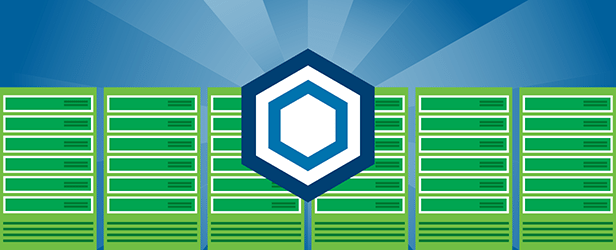How to Actualize the Benefits of Virtualization
When first introduced, the driver for virtualization was consolidation and cost savings.

The Problem
When first introduced, the driver for virtualization was consolidation and cost savings. Nearly every vendor advertised their solution with their slogan over top of a green field, windmill or some other conservationist image. Many organizations adopted virtualization solely on the energy management and related costs savings.
As the market has matured, organizations have begun to explore other benefits that virtualization can offer, such as elasticity and on demand provisioning. Leading analyst firm Gartner marks this as the second phase of virtualization, which “will lead to increased infrastructure agility, inside and outside the data center. The focus on portability leads to improved SLAs, based on more-rapid provisioning, greater scalability, and high availability (HA) and disaster recovery (DR) …”1
In order to provide the desired level of agility and SLAs, organizations will need to connect their virtualization management into other systems in order to provide more-rapid provisioning and start to realize the next level of benefits that virtualization offers.
As Gartner says in the same report “Virtualization isn’t just a set of technologies buried in infrastructure. It has important ramifications for the business use of IT, and for business itself.“2
Most virtualization vendors provide sophisticated tools that allow organizations to develop and deploy virtualization workflows that simplify this process and even provide the ability to automate the provisioning of new VMs. However, provisioning the VM is only a piece of the puzzle. That VM will need to be accessible over the network and thus an IP address and DNS hostname will be required.
The challenge for many organizations is that the team that manages the network is almost never the same team that manages the virtualization infrastructure. In order to connect a VM to the network, the virtualization team needs to open a change request with the network team to provision the IP and DNS information. This disconnect creates a manual step in the end-to-end provisioning process that prevents virtual admins from instantaneously adding new services, removing some of the main benefits of the second phase of virtualization.
At best, the network team may be able to provision this request in a matter of hours. However, for most organizations, the typical SLA for responding to this type of request is measured in days. To avoid this pitfall, admins have become used to placing change requests well in advance of the planned deployment. This is all well and good when you know ahead of time that you’re planning to launch a new application, but is of little use when capacity needs to be added quickly.
Some vendors, such as VMware, recognize the need for instant IP address provisioning. As part of their solution, they provide the ability to configure a pool of IP addresses that can be used to allocate to new VMs. While this helps to speed up the time to deploy, it introduces another set of challenges for the organization.
Depending on the rate of VM provisioning, the pool of available IP addresses could become quickly exhausted. If this happens, then the organization is back to square one without the ability to provision IP and DNS space in real-time. And regardless of the IP pool configuration on VMware, there’s still no ability to provision DNS host records, which are necessary in order for other systems on the network to find and connect to the newly provisioned VM.
In addition, using the local pool of IP addresses on VMware introduces multiple locations for IP change management. This leaves the network team in the dark, as they have no visibility into which IP addresses have been used and by which systems.
In order to actualize the benefits of virtualization and take advantage of elasticity, organizations need a way to automate network change requests as part of their virtualization provisioning process.
The Solution
BlueCat’s Connector for VMware provides an automated solution for assigning IP addresses and updating DNS information directly from VMware management solutions to BlueCat Address Manager. This allows VM admins to immediately create and deploy IP addresses and DNS hosts for newly provisioning VMs. This helps to eliminate delays and costs associated with provisioning VMware resources (including vApps).
BlueCat provides a number of pre-defined workflows that can be leveraged for immediate use and also allows admins to integrate Address Manager into existing workflows that have already been built by the organization.
And when looking at the challenges with virtualization, Gartner has indicated some of the current inhibitors to automating the IT process. Namely:
- The need for more out-of-the-box workflow templates or building blocks that will enable faster time to implement. Without specific content for various scenarios, IT resources are tasked with building workflows and associated execution scripts, which is often time-consuming and requires in-depth tool knowledge.
- A lack of knowledge of the tasks or activities being automated. Many organizations try to use these tools without the necessary process knowledge, and developing this process design often requires cross-domain expertise and coordination. IT organizations that don’t have their processes and task workflows documented often take longer to succeed with these tools.3
By providing pre-built workflows that organizations can use out of the gate, the barrier to implementation is lowered. Customers benefit from the expertise of BlueCat and integrate one of the key aspects of the provisioning process.
And it’s not just about getting VMs online quicker. In addition to speeding up the provisioning and de-provisioning of VMs, the BlueCat Connector for VMware helps to prevent outages associated with exhausting the IP pool on VMware. It also gives organizations the centralized control and visibility they need to know which IP addresses are assigned to which devices.
For the IPAM administrator, BlueCat Connector for VMware:
- Ensures that all the IPs used by VMware are kept in-sync with the central IPAM repository
- Simplifies auditing of changes to IPs and networks, whether virtual or physical
- Connects every VM to its various IPs and DNS entries making it easy to track the network and IP usage by VMs in the environment
- Tracks the IP lifecycle associated with all VMs in the virtual environment
- Ensures optimal usage and recycling of increasingly scarce IPv4 addresses assigned to the virtual environment
For the VMware Administrator, BlueCat Connector for VMware:
- Ensures there’s always available IPs for the VM infrastructure
- Removes the need to go back to the network team for additional IP space or to request DNS/DHCP provisioning for new VMs
- Works within the VMware UI so no retraining is required
1 Hype Cycle for Virtualization, 2012 – Philip Dawson, Nathan Hill, July 2012
2 Hype Cycle for Virtualization, 2012 – Philip Dawson, Nathan Hill, July 2012
3 Will Private Cloud Adoption Increase by 2015? – Michael Warrilow, Matthew Cheung, May 201






